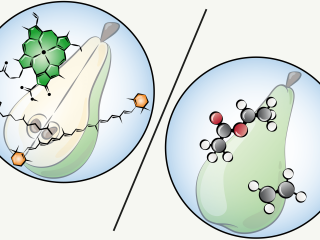
Research Results
Ripening stage of melons
In the GreenCHAINge project research focus was on getting a better grip on the quality of melon to get high-quality and ready-to-enjoy fruits for consumers. This research result describes how the ripening stage of melons can be determined by measuring the emission of gasses by the ripening melon.

Objective
Result & Conclusions
The research was performed on the popular melon cultivar Natal. Key volatiles related to ripening are acetaldehyde, various esters, and ethanol, which are fruity odours that relate to fruit ripening. Production of these volatiles appeared to decrease during storage, irrespective of storage temperatures. Melons release more aroma volatiles at 22 °C (supermarket & at home) than at 4 °C (storage & transport). When melons are relased from storage, accelerated ripening takes place. This is the higher for melons stored at 4 °C than for melons stored at 7 °C or 10 °C.

Take away message
The monitoring of aroma volatile production of melons allows for optimal timing of harvest, storage and point-of-sale moments in the supply chain.
This project was commissioned and funded by Frankort & Koning and
East-West Seed and cofunded by Top Sector for Horticulture & Starting Materials.
More detailed information about this research result can be found at:
https://edepot.wur.nl/563036
Questions? Please contact the our experts through the contact form below.